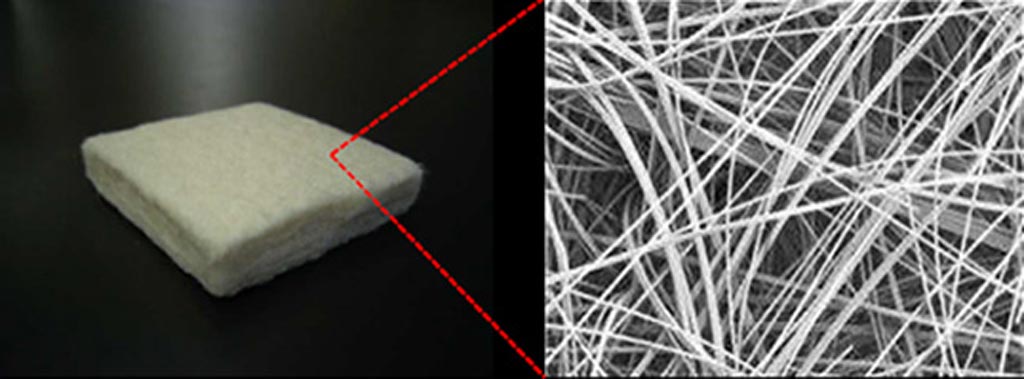Spacer Protects Healthy Organs from Radiation Exposure
By MedImaging International staff writers
Posted on 14 Aug 2019
A bioabsorbable nonwoven fabric spacer creates a separation between healthy and cancerous tissues during particle therapy, according to a new study.Posted on 14 Aug 2019
Developed by researchers at Kobe University (Japan) and Alfresa Pharma (Osaka, Japan), Neskeep is made of polyglycolic acid, a biodegradable, thermoplastic polymer characterized by hydrolytic instability owing to the presence of an ester linkage in its backbone. As a result, when exposed to the right physiological conditions, the spacer is degraded by hydrolysis. The degradation product, glycolic acid, is nontoxic, eventually excreted as water and carbon dioxide (CO2). A part of the glycolic acid is also excreted by urine. Neskeep is available in 5, 10, and 15mm nonwoven fabrics.

Image: A biodegradable polyglycolic acid spacer preserves healthy tissues during RT (Photo courtesy of Kobe University).
Following safety studies in animal models, a human trial involving five patients with malignant tumors in the abdominal or pelvic region--for whom particle therapy is difficult because of the proximity of normal organs to the cancer--was conducted at Hyogo Ion Beam Medical Center (HIBMC; Tatsuno, Japan). The results showed that the spacer preserved enough distance between the tumor and healthy tissue during the particle therapy, successfully reducing radiation exposure to the intestines. There were no serious complications observed, and the spacers safely disintegrated afterwards. The study was published in the August 2019 issue of the Journal of Surgical Oncology.
“In some cases, it can be difficult to apply particle therapy when malignant tumors are located near digestive tract organs sensitive to radiation (the small and large intestine),” commented Professor Takumi Fukumoto, PhD, and Professor Ryohei Sasaki, MD, PhD, of Kobe University. “Doctors currently use non-absorbent materials such as silicone balloons and Gore-Tex sheets to act as spacers in the abdomen and intestines, or they place the intestine or other organs outside the radiation field using an absorbent mesh.”
The degradation process of polyglycolic acid is erosive, during which the polymer is converted back to its monomer glycolic acid: first water diffuses into the amorphous (non-crystalline) regions of the polymer matrix, cleaving the ester bonds; the second step starts after the amorphous regions have been eroded, leaving the crystalline portion of the polymer susceptible to hydrolytic attack. Upon collapse of the crystalline regions the polymer chain dissolves.
Related Links:
Kobe University
Alfresa Pharma














